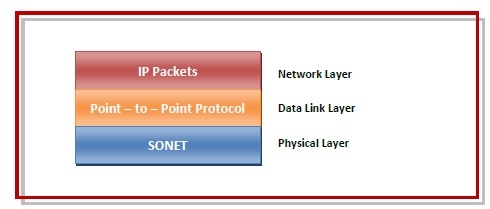
 Data Structure
Data Structure Networking
Networking RDBMS
RDBMS Operating System
Operating System Java
Java MS Excel
MS Excel iOS
iOS HTML
HTML CSS
CSS Android
Android Python
Python C Programming
C Programming C++
C++ C#
C# MongoDB
MongoDB MySQL
MySQL Javascript
Javascript PHP
PHP
- Selected Reading
- UPSC IAS Exams Notes
- Developer's Best Practices
- Questions and Answers
- Effective Resume Writing
- HR Interview Questions
- Computer Glossary
- Who is Who
Packet over SONET
Synchronous optical networking (SONET) is a physical layer protocol for transmitting multiple digital bit streams over optical fiber links that form the backbone of the communication networks. Packet-over-SONET (POS) is a standard that maps IP packets into SONET frames. To implement this mechanism, Point – to – Point Protocol (PPP) runs on IP routers. Point – to – Point Protocol (PPP) is a data link layer protocol that is used to transmit data between two directly connected (point-to-point) computers. It is a byte-oriented protocol that is widely used in broadband communications having heavy loads and high speeds.
The following diagram shows the protocol stack of Packet over SONET (POS) −

Features provides by PPP in POS
Framing − It encapsulates the datagram in a frame so that it can be transmitted over the specified physical layer. It delineates the beginning and end of the frames and provides for error detection.
Link Control Protocol (LCP) − It is responsible for establishing, configuring, testing, maintaining and terminating links for transmission. It also imparts negotiation for set up of options and use of features by the two endpoints of the links.
Network Control Protocols (NCPs) − These protocols are used for negotiating the parameters and facilities for the network layer. For every higher-layer protocol supported by PPP, one NCP is there.
Application of POS
For sending a large amount of network traffic over the Internet.
For transmitting IP packets over Wide Area Networks (WANs).
In resilient packet ring (RPR) standard.

